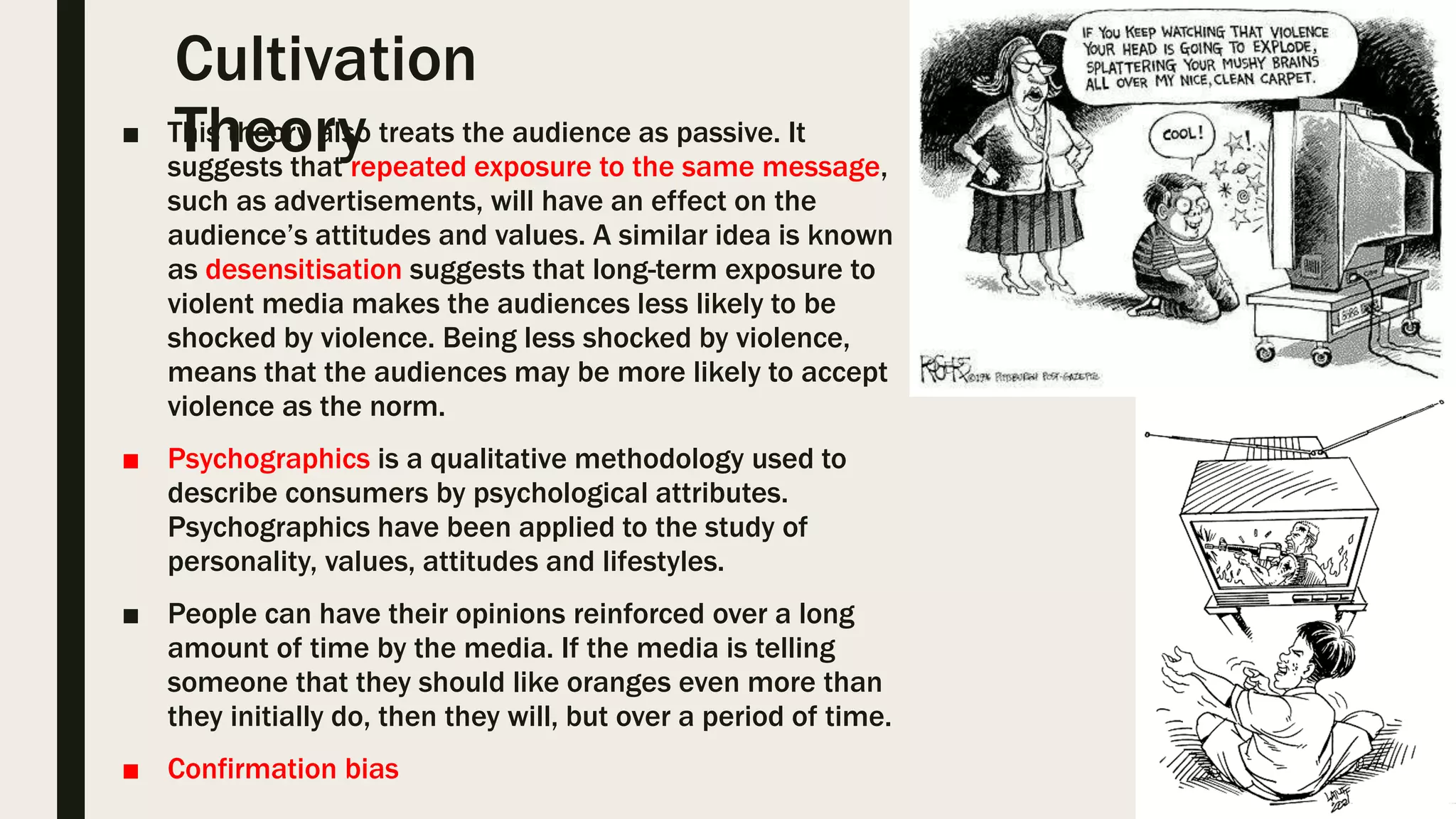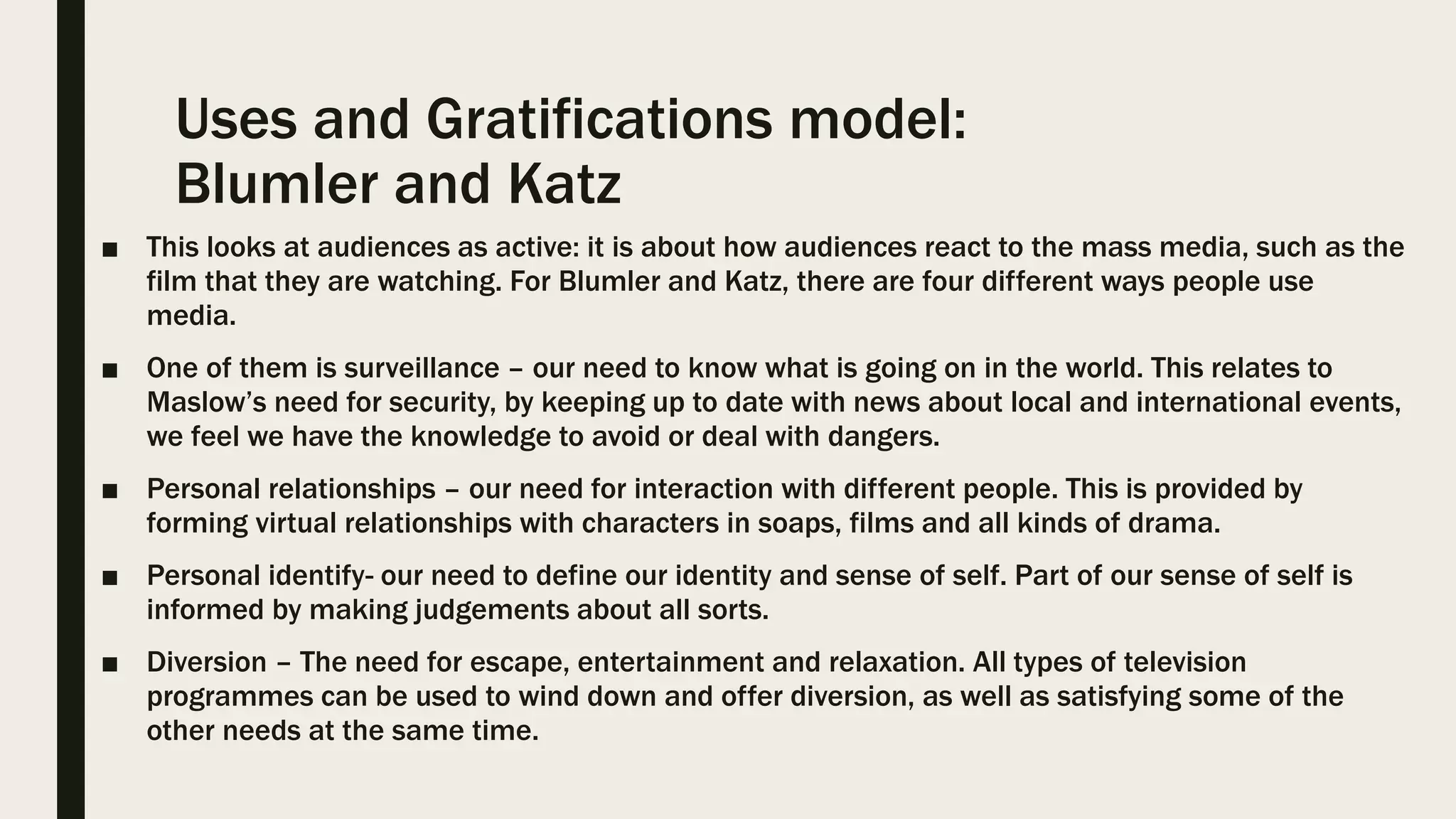This document discusses different theories around media audiences. It begins by outlining Abraham Maslow's hierarchy of needs theory and how it can apply to media usage. Lower level needs like safety must be met before higher level needs for things like belongingness that media can provide. Earlier theories viewed audiences as passive and heavily influenced, but more recent models see audiences as active, interpreting media through their own experiences and for their own purposes. The two-step flow theory and uses and gratifications model present more active audience roles. Reception analysis also looks at how social factors shape how audiences read media.








